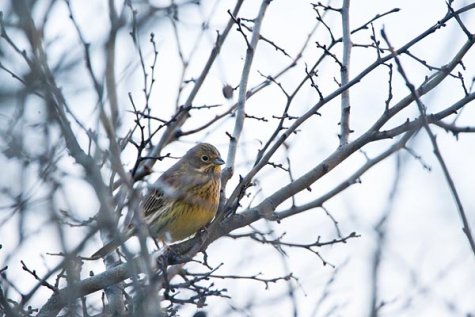Migrating passerines – yellowhammer
Photo: Arne Ader
Translation: Liis
Yellowhammer
Yellowhammer Talvike Emberiza citrinella
Yellowhammers don’t particularly press into large cities but in rural village landscapes they are quite common in the breeding season. The larger part of our nesters leave at the end of October; the passing migration still lasts. Quite many stay for winter – up to a couple 0f hundred thousand.
The autumn and winter plumage is not as vividly yellow as in the spring. Look carefully when you have a chance. The yellowhammer’s rump is reddish brown, back plumage streaked in black and brown and the breast plumage is more or less reddish brown. The plumage of females and young birds is duller in colour and there is less yellow on the head.
Birds with a calm demeanour, seem a little awkward moving on the ground. They are not particularly shy of people, move in groups, where a little bickering belongs to the life-style. They are happy to feed on the ground when there is something to feed on. In winter visitors at bird feeders.









